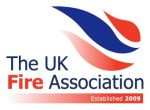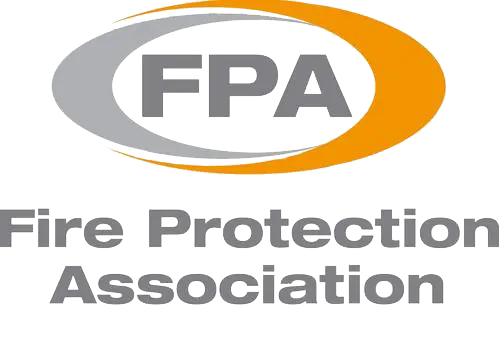At ESI: Electrical Safety Inspections, we deliver comprehensive fire safety services to businesses across Edmonton. Whether you manage an office, warehouse, retail premises, care home, school, or industrial site, we help you stay compliant, protect staff and customers, and safeguard your property.
With over 20 years of experience, we understand the legal and practical challenges businesses face when it comes to fire safety. Our qualified engineers and fire safety specialists provide expert advice, inspections, testing, and maintenance in line with UK regulations and British Standards.
Book Your Fire Safety Assessment Today – Protect your business and meet your legal obligations. Call us now on 01276 300 351 to schedule your visit.
Fire Safety Compliance and Best Practice
Edmonton businesses are legally required under the Regulatory Reform (Fire Safety) Order 2005 to maintain a safe environment and ensure that all fire safety systems and equipment are properly installed, maintained, and tested.
Our services are delivered in compliance with key standards, including:
-
BS 5839 – Fire detection and alarm systems
-
BS 5306-3 & BS 5306-8 – Fire extinguisher servicing and selection
-
BS 5266 – Emergency lighting installation and testing
-
BS 9990 – Dry riser testing and maintenance
-
BS 9991 & BS 9999 – Fire safety in residential and commercial buildings
Get Expert Fire Protection Advice – Speak to our qualified team about fire safety compliance and protecting your premises – Call today on 01276 300 351.
Our Fire compliance services in Edmonton
🔥 Fire Risk Assessments – Identifying hazards, evaluating risks, and providing practical recommendations to meet legal obligations under the Fire Safety Order.
🔥 Fire Alarm Servicing & Maintenance – Testing and maintenance of fire detection systems in line with BS 5839, helping ensure early warning in the event of fire.
🔥 Fire Extinguisher Supply & Servicing – Supplying, commissioning, maintaining, and testing portable extinguishers in accordance with BS 5306-3, ensuring equipment is ready to use when needed.
🔥 Emergency Lighting Testing & Maintenance – Inspection and testing to BS 5266 standards, ensuring emergency lighting works correctly to guide occupants to safety.
🔥 Dry Riser Inspection & Testing – Six-monthly visual inspections and annual pressure testing in compliance with BS 9990, keeping vital fire-fighting infrastructure ready for use.
🔥 Fire Safety Training – Practical staff training on fire prevention, extinguisher use, and evacuation procedures.
🔥 Fire Door Inspections – Checking condition, fit, and compliance of fire doors to ensure they provide effective compartmentation and protection.
Why Choose ESI in Edmonton
-
Qualified engineers and fire safety specialists serving Edmonton
-
In-depth knowledge of commercial and industrial fire safety compliance
-
Clear, actionable reports and certification
-
Flexible scheduling to minimise disruption
-
Supporting businesses across Edmonton and surrounding areas
Stay Compliant and Safe – Contact us on 01276 300 351 for a free quote on fire alarm servicing, extinguisher maintenance, and risk assessments.
Frequently Asked Questions
Q: How often should fire alarms be serviced?
A: Fire alarms should be tested regularly, with a minimum of two service visits per year for most systems, as recommended in BS 5839.
Q: What training do my staff need?
A: Under the Fire Safety Order, you are required to provide adequate fire safety training to all staff. We offer practical courses tailored to your premises and risk profile.
Q: Do you provide fire extinguisher servicing?
A: Yes – we supply, commission, and maintain fire extinguishers in line with BS 5306-3, ensuring you have the correct type and coverage for your business.
Fire Safety Services in Edmonton
Edmonton is the capital city of the Canadian province of Alberta. It is situated on the North Saskatchewan River and is the centre of the Edmonton Metropolitan Region, which is surrounded by Alberta’s central region, and is in Treaty 6 territory. It anchors the northern end of what Statistics Canada defines as the “Calgary–Edmonton Corridor”.
The area that later became the city of Edmonton was first inhabited by First Nations peoples and was also a historic site for the Métis. By 1795, many trading posts had been established around the area that later became the Edmonton census metropolitan area. “Fort Edmonton”, as it was known, became the main centre for trade in the area after the 1821 merger of the Hudson’s Bay Company and the North West Company. It remained sparsely populated until the Canadian acquisition of Rupert’s Land in 1870, followed eventually by the arrival of the Canadian Pacific Railway in 1891, its inauguration as a city in 1904, and its designation as the capital of the new province of Alberta in 1905. Its growth was facilitated through the absorption of five adjacent urban municipalities (Strathcona, North Edmonton, West Edmonton, Beverly and Jasper Place) in addition to a series of annexations through 1982, and the annexation of 8,260 ha (82.6 km; 31.9 sq mi) of land from Leduc County and the City of Beaumont on January 1, 2019.
As of 2021, Edmonton had a city population of 1,010,899 and a metropolitan population of 1,418,118, making it the fifth-largest city and sixth-largest metropolitan area (CMA) in Canada. It is the northernmost city and metropolitan area in North America to have a population of over one million. Residents are called Edmontonians.
Known as the “Gateway to the North” outside of Ontario, Edmonton has become a staging point for large-scale oil sands projects occurring in northern Alberta and large-scale diamond mining operations in the Northwest Territories. It is a cultural, governmental and educational centre that hosts festivals year-round, reflected in the nickname “Canada’s Festival City”. It is home to Canada’s largest mall, West Edmonton Mall (the world’s largest mall from 1981 until 2004); and Fort Edmonton Park, Canada’s largest living history museum.









